1- Junagarh Fort
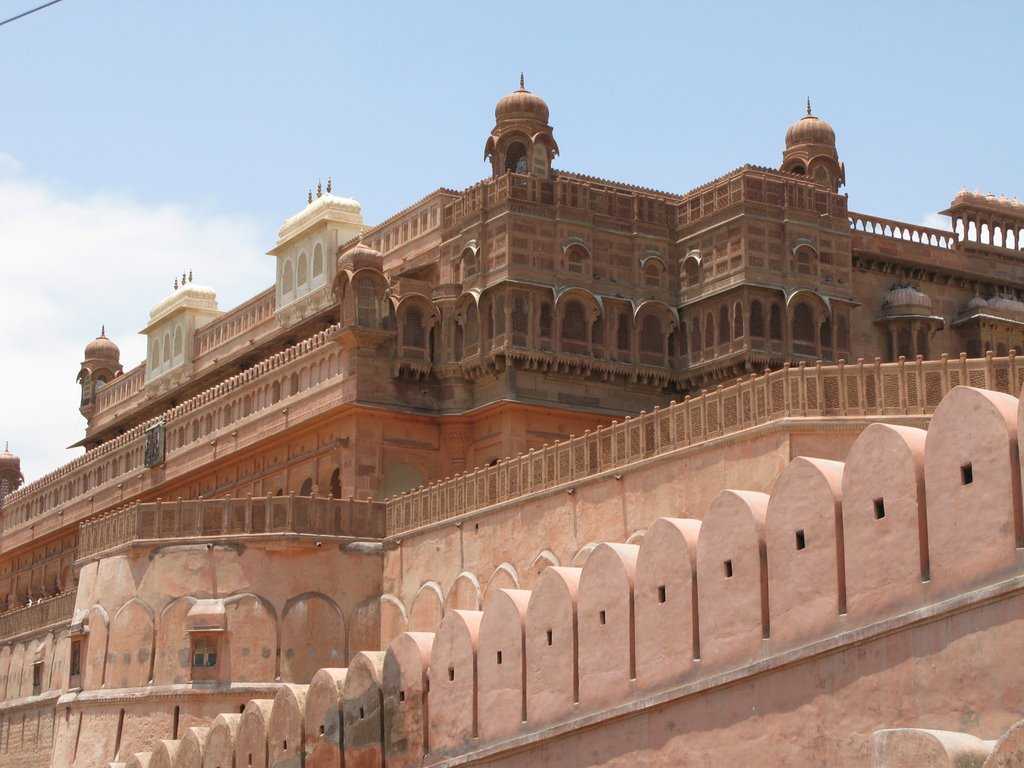
Junagarh Fort, Bikaner Overview
The Junagarh Fort of Bikaner is a magnificent structure around which the city of Bikaner grew up. The fort was initially called Chintamani and was then renamed as the Junagarh or Old fort in the 20th century. The foundations of the Junagarh fort was built in 1478 by Rao Bika. However, it existed just as a stone fort then. The present grand structure was inaugurated on 17th February 1589. Besides having a rich history, the Junagarh Fort is a feat of architecture. The palaces inside the fort, the gardens, balconies, kiosks, etc. depict a composite architectural style which is influenced by the cultural differences of the different rulers and also foreign inspirations. The impressive Junagarh Fort stands with all its regal glory as an epitome of architectural brilliance. The dazzling and exquisite structures of this fort attract thousands of tourists from all over every year.
The earliest smear of the architecture of the Junagarh Fort is that of the traditional Rajput style influenced by the alliance of the Gujarati association with the Mughals. Next, the architecture reflected semi-western influence and lastly the revivalist Rajput structures built mainly during the rule of Maharaja Ganga Singh. The unique monuments which are on display in the fort represent 16 generations of rulers in Bikaner starting from the late 16th century. Junagadh is an ancient fortified city with a chequered past and has an eclectic mix of mosques, Hindu temples, Buddhist monuments, Gothic archways, and beautiful mansions.
2- Karni Mata Temple
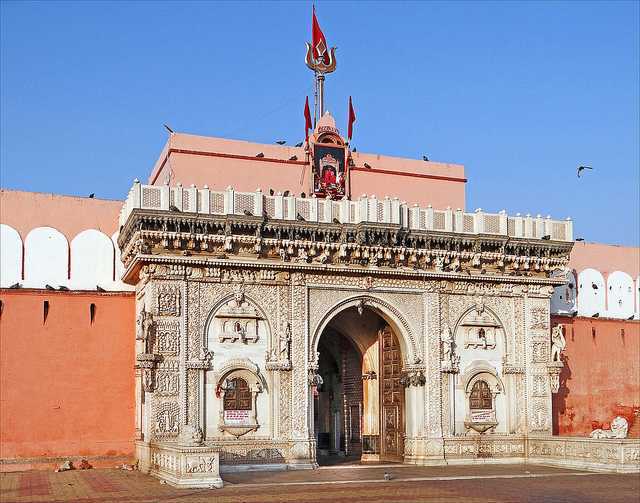
Karni Mata Temple, Bikaner Overview
The Karni Mata Temple, also popularly known as the Nari Mata Temple, is a highly popular tourist spot amongst devotees that is dedicated to Karni Mata, who is believed to be an incarnation of Maa Durga. She is supposed to have laid the foundation stones of two of the most famous forts in Rajputana, and numerous temples dedicated to her can be found all across the country. What is unique about this temple, however, is not its architecture or location, rather the fact that 25,000 black rats live, and are worshipped, in the temple. In fact, the food that is eaten by them is considered to be holy and is later served as 'prasad'.
These holy rats are known as kabbas, and people from all over the world travel great distances to come and visit the temple to pay their respects to these rats. This is why the temple is also popularly called the 'Temple of Rats'. This Hindu temple is 600 years old and is located in a small town of Deshnok, which is 30 kilometres to the south of Bikaner, Rajasthan in India. Numerous tales and legends are associated with the temple and the rats that live here, but no one knows the exact history of this unique shrine.
The Karni Mata Temple is also noteworthy for its architecture that has been influenced by the Mughal style of construction. The beautiful temple is adorned with a fantastic marble facade and marble carvings that further add to the charm of this place. While the entire concept of this temple may seem as gross or weird to some, it is a unique experience altogether and is something you should not miss out.
3- Lalgarh Palace
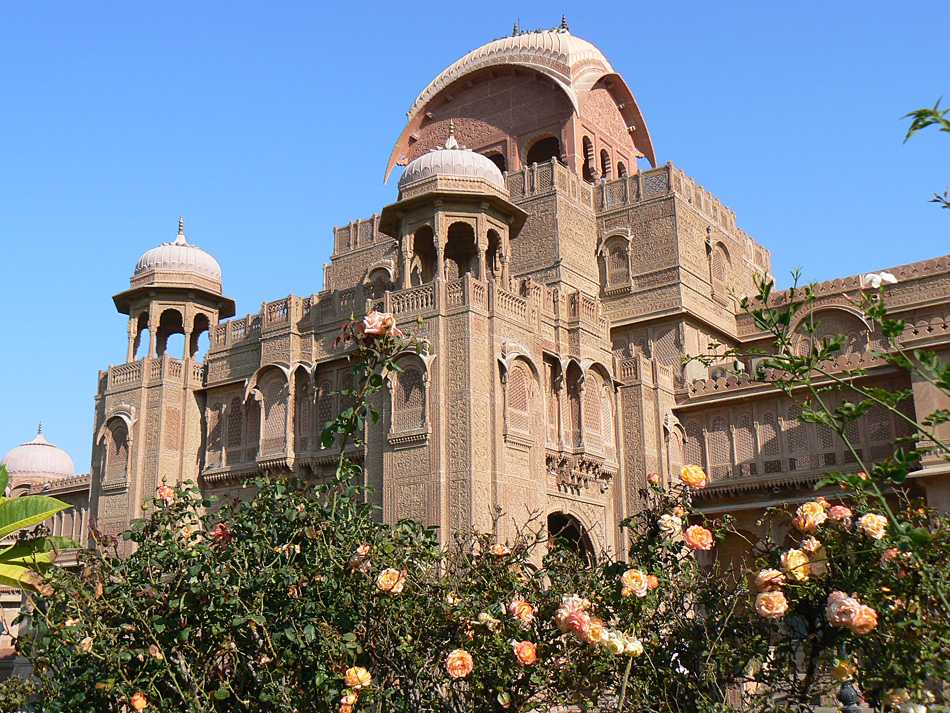
Lalgarh Palace, Bikaner Overview
Lalgarh Palace, a breathtaking Rajasthani Palace, is located in the beautiful city of Bikaner, Rajasthan in India. It was constructed for the Maharaja of Bikaner, Maharaja Ganga Singh, between 1902 and 1926. The marvellous palace is a treat to the sore eye in the dry and arid regions of Rajasthan. The palace has now been opened up for tourists as a Heritage Hotel and the entire estate comes under the National Heritage Trust. So whether it's the traditional Rajasthani culture or cuisine or the majestic history calling you, this heritage monument has to be on your list of must see this year.
The colours of the beautiful structure when they change shades as the day progresses are sure to mesmerise you. If you wish to stay at the Lalgarh Palace Hotel, you'll be amazed at the massive size of the rooms you'll be living in and the regal hospitality you'll be receiving. The estate also houses a museum named Shri Sadul Museum, where you can find traces of Rajasthani Royalties and get an insight of their extravagant lifestyle. One of the estate wings has been maintained only for the Royal family of Bikaner. The other two wings are for The Lalgarh Palace Hotel and the Lakshmi Niwas Hotel.
While you are there, do make sure you explore the entire estate and absorb its beauty. Walk through the splendid corridors and the beautiful entrance and take an after breakfast stroll in the gardens outside or a dip in the extravagant swimming pool. Notice the magnificent pillars and fireplaces in the red sandstone architecture, and the carefully maintained gardens and the intricate latticework. The picturesque locations in the estate have fascinated many, and they have been featured in numerous movies and are regularly visited by celebrities. The Palace bears the rich culture of regal Rajasthan in every corner of the arrangement as every facet of the magnificent structure has been designed to suit royalty and is sure to make you feel the same way.
4- Rampuriya Haveli
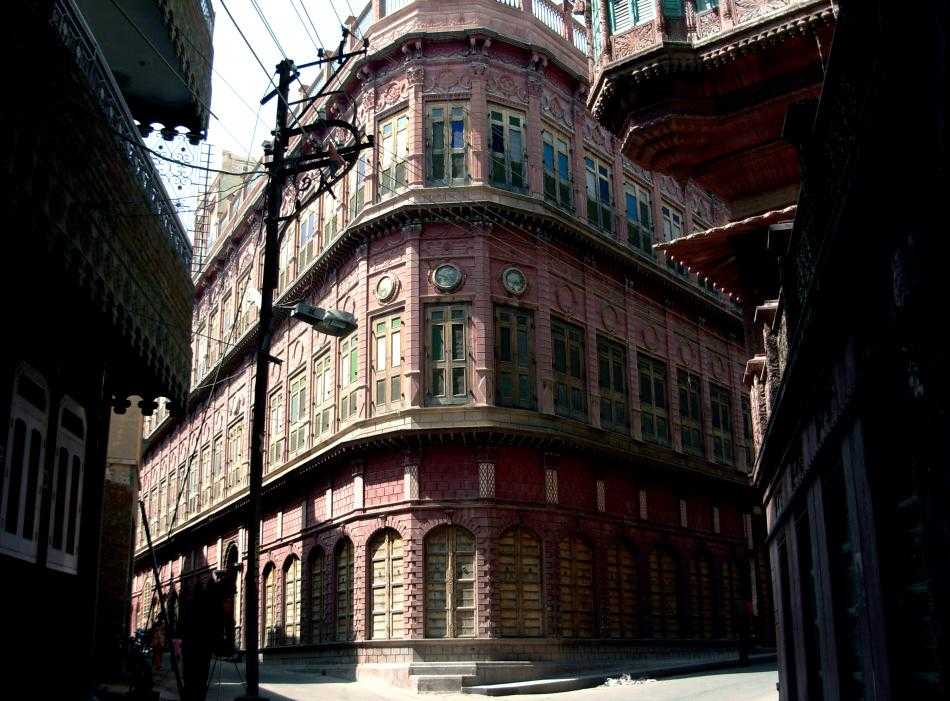
Rampuriya Haveli, Bikaner Overview
Rajasthan, especially Bikaner, is known for its havelis. Large, magnanimous, extravagant houses complete with intricate details of jharokas and carvings, havelis are no less than palaces.
Great effort has been put into the smallest of details. From doors to windows to every small bit, special thought and neatness has been adhered to and hence such a brilliant piece of architecture has been created. Among all other havelis like Rikhji Bagri ki Haveli, Haveli of Bhairondan, Daga Chowk Havelis and Sampatlala Agarwal Haveli, Rampuria group of Havelis are known for their more than 400 years old architecture splendor.
5- National Research Centre On Camel
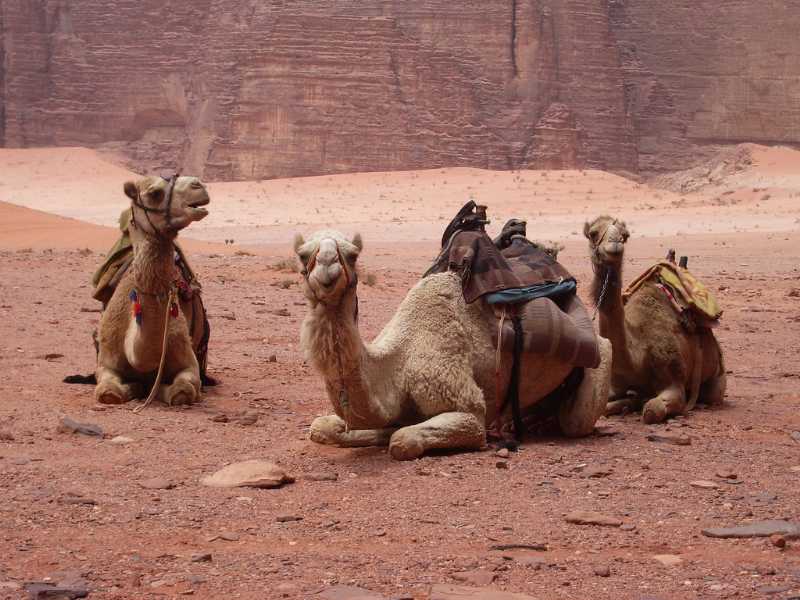
National Research Centre On Camel, Bikaner Overview
Identified as one of the important tourist place of Bikaner, National Research Centre On Camel is open for tourists during afternoon. Tourists can see the camel of different breeds and their behavior.
A camel museum is available to apprise them of the developmental and research aspects of the camel in the desert ecosystem. Facilities of camel riding, safari and video/photography are also available. Special attraction of the centre is Camel milk parlour and you can have unique value added camel milk products like ice-cream, hot and cold beverages. There are many shops within the premises too.